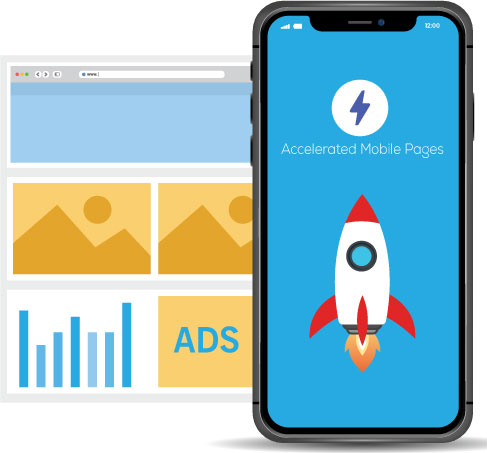AMP stands for “Accelerated Mobile Pages”. Google AMP is an initiative designed by Google to build fast websites, especially for mobile devices.
Due to the complex structure of web page and lots of advertisements placed on a website, makes the web page heavy which causes a delay in page load and bad user experience especially in mobile. Google AMP format limited the access of javascript, CSS, animation etc to load web pages fast.
Due to restriction on google amp pages, it’s not easy to integrate ads as compared to normal web pages. In this blog, we will discuss on how to integrate amp-ads, types of ads in amp and their limitations.
You will need to place the appropriate AMP ad code on the page. Here is the list of things you need to know:
- First, you need to know who is your ad providers, because your ad providers must be listed as a partner in the google AMP project. You can check ad providers list which is in partnership with Google amp project. Go to this link: https://www.ampproject.org/docs/reference/components/amp-ad
- After selecting your ad provider, you have to locate the sample ad unit and view the list of required and optional data-attributes.
- In general, all Google AMP ads require you to specify the width, height, layout, and type. For Example, for Google DoubleClick (DFP) a basic implementation might look like this:
- The type attribute is the ad network name. This attribute is required. Next is layout attribute which is required for some ad networks. Some additional parameters required by the ad providers are tagged as “data-” attribute.
- Many ad providers provide the entire AMP ad code snippet and you can just copy/paste that.
- You can place multiple ads on one page.
- Always use the Google AMP validator tool after placing the ad units to check the validity of the code.
- Sample Google AMP Ad Code.
<amp-embed width=400 height=300
type="taboola"
layout=responsive
data-publisher=thepublisher
data-mode=themode
data-article=auto
data-placement="Below Article Thumbnails">
</amp-embed>Limitations for AMP ads
As external Javascript is not allowed in AMP pages, hence many features could not work properly. Only the manual placement and placements before, within and after the content are supported, but none from Advanced Ads Pro. Caching in Advanced Ads Pro does not work on AMP pages. Impression tracking works with the methods track on load and track after page printed. Some issues can occur depending on the method you used to create AMP pages. The AMP plugin by Automatic cannot create AMP code for archive pages.
Related Post :
How Does AMP Pages Impact SEO?
How To Integrate Web Push Notification on AMP?
8 Advantages of Google accelerated mobile pages

























 Email
Email SMS
SMS Whatsapp
Whatsapp Web Push
Web Push App Push
App Push Popups
Popups Channel A/B Testing
Channel A/B Testing  Control groups Analysis
Control groups Analysis Frequency Capping
Frequency Capping Funnel Analysis
Funnel Analysis Cohort Analysis
Cohort Analysis RFM Analysis
RFM Analysis Signup Forms
Signup Forms Surveys
Surveys NPS
NPS Landing pages personalization
Landing pages personalization  Website A/B Testing
Website A/B Testing  PWA/TWA
PWA/TWA Heatmaps
Heatmaps Session Recording
Session Recording Wix
Wix Shopify
Shopify Magento
Magento Woocommerce
Woocommerce eCommerce D2C
eCommerce D2C  Mutual Funds
Mutual Funds Insurance
Insurance Lending
Lending  Recipes
Recipes  Product Updates
Product Updates App Marketplace
App Marketplace Academy
Academy



